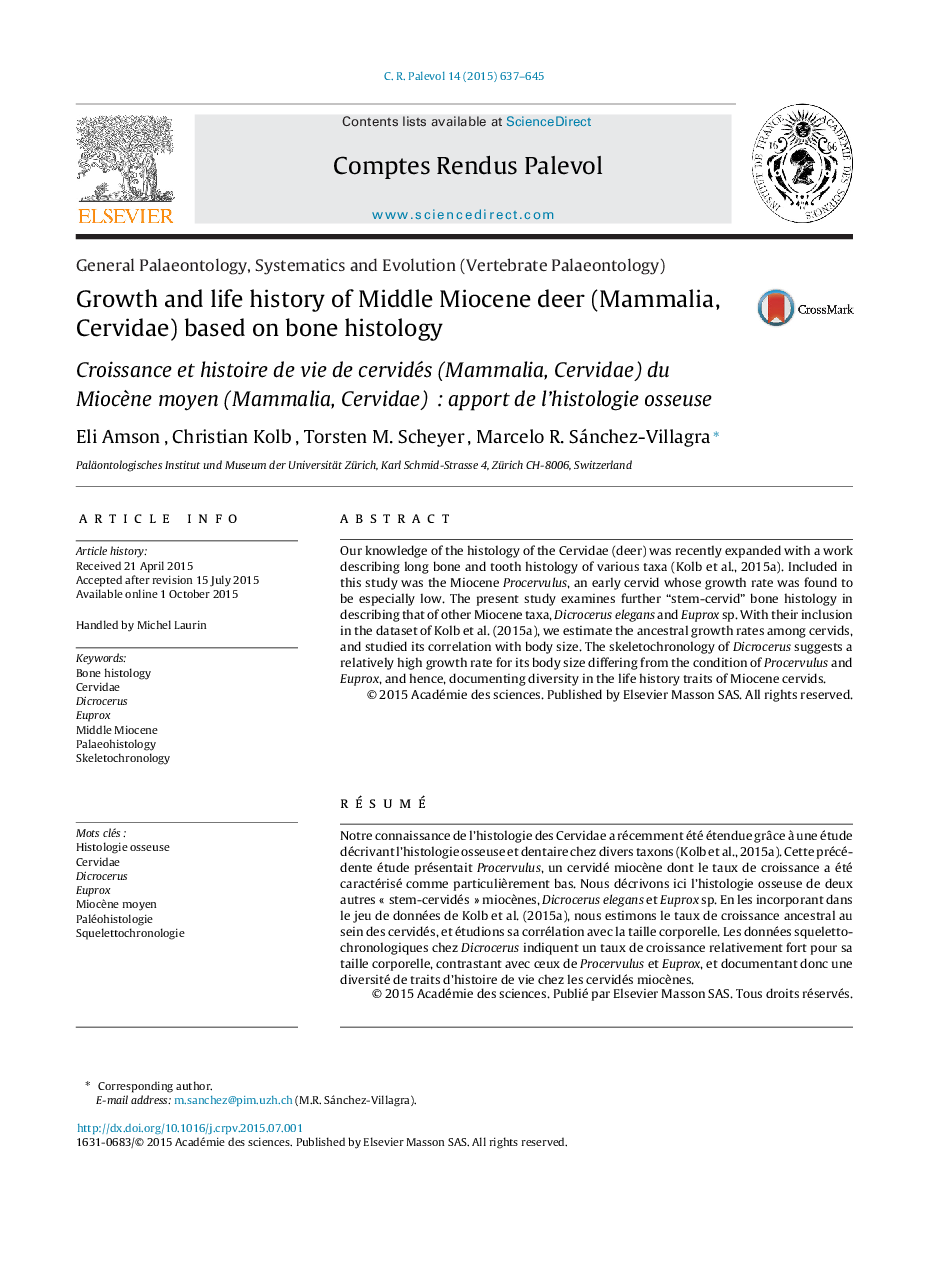| Article ID | Journal | Published Year | Pages | File Type |
|---|---|---|---|---|
| 4745617 | Comptes Rendus Palevol | 2015 | 9 Pages |
Our knowledge of the histology of the Cervidae (deer) was recently expanded with a work describing long bone and tooth histology of various taxa (Kolb et al., 2015a). Included in this study was the Miocene Procervulus, an early cervid whose growth rate was found to be especially low. The present study examines further “stem-cervid” bone histology in describing that of other Miocene taxa, Dicrocerus elegans and Euprox sp. With their inclusion in the dataset of Kolb et al. (2015a), we estimate the ancestral growth rates among cervids, and studied its correlation with body size. The skeletochronology of Dicrocerus suggests a relatively high growth rate for its body size differing from the condition of Procervulus and Euprox, and hence, documenting diversity in the life history traits of Miocene cervids.
RésuméNotre connaissance de l’histologie des Cervidae a récemment été étendue grâce à une étude décrivant l’histologie osseuse et dentaire chez divers taxons (Kolb et al., 2015a). Cette précédente étude présentait Procervulus, un cervidé miocène dont le taux de croissance a été caractérisé comme particulièrement bas. Nous décrivons ici l’histologie osseuse de deux autres « stem-cervidés » miocènes, Dicrocerus elegans et Euprox sp. En les incorporant dans le jeu de données de Kolb et al. (2015a), nous estimons le taux de croissance ancestral au sein des cervidés, et étudions sa corrélation avec la taille corporelle. Les données squelettochronologiques chez Dicrocerus indiquent un taux de croissance relativement fort pour sa taille corporelle, contrastant avec ceux de Procervulus et Euprox, et documentant donc une diversité de traits d’histoire de vie chez les cervidés miocènes.
